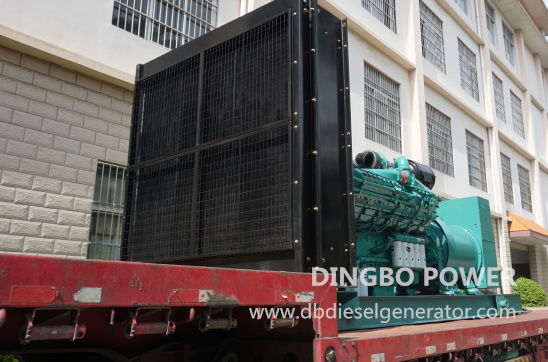Recently Dingbo Power received a few emails from users who encountered generator under voltage shutdown problems. According to their descriptions, the faults usually occurred after they started the generators for less than one minute. In fact, there are many possible causes of generator under voltage problem. This article covers some common causes and the solutions.
1.Low generator speed
In the generator set, the governor is an equipment associated with prime mover. The governor varies the amount of fuel delivered to the engine and adjusts the speed of prime mover. The voltage and frequency of a generator is largely determined by the speed they are running. When an undervoltage problem arises, you need to verify whether your generator set actually maintains its normal rated speed under all load conditions. Check the governor immediately and make sure it is in good condition and works properly. If the generator is running at a very low speed, try adjusting the prime mover speed of the synchronous generator with the adjustment screw to reach the rated value. If this is not the case, you need to look for other possible causes. It’s recommended that you call your dealer or ask a professional technician for help if you are not qualified.

2.Faulty AVR (Automatic Voltage Regulator)
The AVR is one of the essential elements that control the output voltage of the generator set. If there is something wrong with the AVR, a undervoltage may also appear. In this case, you can fix the problem by checking and making adjustments to the AVR. Start by checking the wiring of the ARV to see if there is any short-circuit or bad connection. If the wiring is normal, try making adjustments to parameters of the AVR according to the output voltage of the generator. In addition, defective rotor brushes may also result in the generator under voltage, you need to make sure they are in good condition and are making contact with the rotor. Replace the AVR if it can’t function well.
3.Overloading
Undervoltage conditions are usually caused by overloading of generator. When the demand for power exceeds the capability of the generator set, it's not surprising that the voltage drops. Under the circumstances, you can try making the measurements again with a smaller load to see if the voltage comes back to normal. Make sure the generator is sized properly for the load it is powering.
4.Loss of residual magnetism in the alternator
If new generator sets suffer bumpiness during transport or are left unused for a long period of time, it may result in the loss of residual magnetism or weak residual magnetism. To solve the problem, you need to regenerate the magnetism if this residual magnetism has been lost. Make certain how much voltage the excitation output of the generator AVR voltage regulator board is, and then connect the voltage source to the excitation output line for magnetization. Ensure the voltage types are corresponding and the polarity should not be reversed.
Other causes that may result in the generator undervoltage problems:
-Shorted windings: Megger test the alternator windings to highlight any issues. Check whether there is a short circuit or ground fault in the stator winding or if excitation connector is broken or connected incorrectly.
-Bad connections: Loose or eroding connections can cause resistance, resulting in voltage drop in the generator. If you are familiar with the equipment, check for loose electrical connections visually and reinsert any that are loose.
-A defective capacitor. A bad capacity will lead to a low voltage reading on the generator control panel. Test the capacitor with a multi-meter and replace it if it can’t work properly.
-Damaged rectitier diodes. You need to check alternator diodes and replace the broken diodes if there are any.
-Battery problems: If the generator's battery is failing or has a low charge, it can cause voltage drop. It’s necessary to replace it timely with appropriate battery model and capacity.
-other mechanical problems like fuel injection clogged or fuel filters clogged may also cause the problem.
Again, don't perform the above items if you are not qualified. Ask a professional for help and get the optimal solution. Keep in mind that regular maintenance of generator sets can help prevent such problems from occurring.
If you are looking for a reliable and trusted diesel generator, contact Dingbo Power now. We provide a variety of diesel generators which can suit your needs perfectly. The excellent warranty and after-sales support we offer will bring you peace of mind.
Comments
Post a Comment